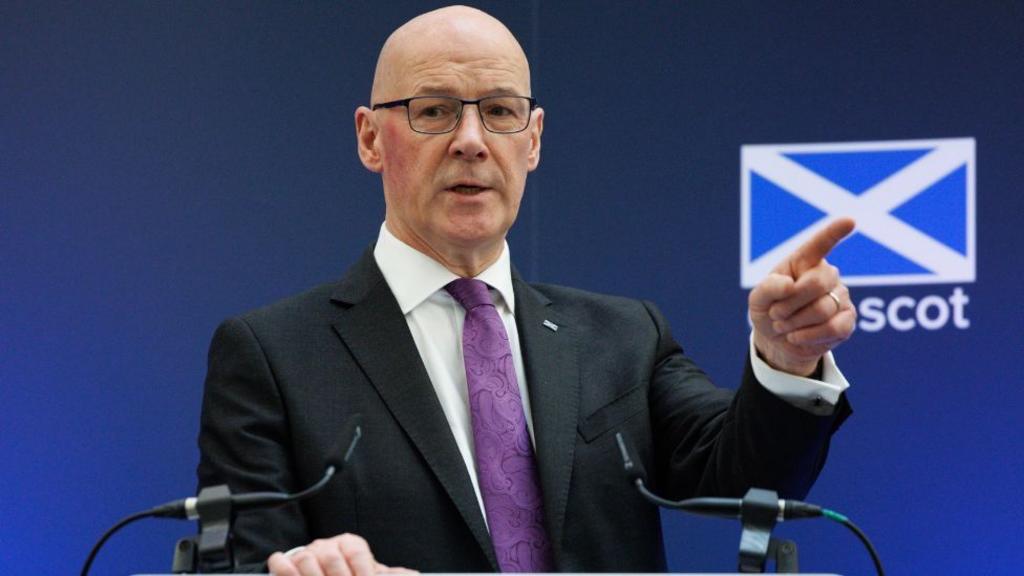John Swinney has detailed his strategy for achieving Scottish independence in an article published by The National.
While the headline suggests a “renewed” approach, much of the strategy echoes the First Minister’s messaging since assuming leadership of his party last year.
The SNP leader has proposed a three-pronged strategy.
First, he aims to build “the highest levels of support possible for independence” through a dedicated campaign.
For some time, voices within the SNP have argued that an independence vote should ratify the “settled will” of the Scottish people.
Previously, when questioned about the level of support required, Swinney referenced the 1997 devolution referendum, where 74% of Scots voted in favor of a Scottish Parliament.
Second, the First Minister stated his intention to build “public pressure around Scotland’s fundamental national rights.”
Elsewhere in the article, Swinney affirmed that an “agreed democratic referendum” remains the path to independence.
However, the Supreme Court has previously ruled that the authority to grant such a referendum rests with the UK government.
Therefore, his aim is to exert pressure on ministers in London to grant the Scottish Parliament a role in determining the timing and possibility of a future vote.
The means to achieve this? Refer back to point one.
Finally, Swinney posits that an “emphatic” SNP victory in the next Holyrood election would bolster the party’s ultimate objective.
This likely explains the timing of the First Minister’s outlined proposals.
The SNP’s voter base overwhelmingly supports independence.
He needs to ensure their turnout and support for his party next year, discouraging them from considering alternative pro-independence parties like the Greens or Alba.
However, will this strategy be seen as sufficiently proactive by those eager for constitutional change?
A broad plan has been presented, but the specific mechanisms remain undefined.
His predecessors have faced setbacks by overcommitting on this issue.
Nicola Sturgeon previously set a date for a second referendum and suggested a general election could serve as a “de-facto” vote on independence.
Neither promise materialized.
Humza Yousaf pledged that independence would be the top priority in the SNP’s 2024 general election manifesto. While he was no longer in office, the pledge remained.
The SNP subsequently experienced a significant setback, losing 39 seats.
Swinney must inspire his supporters on the issue of independence while avoiding overpromising.
He faces a balancing act, avoiding accusations of excessive focus on the constitution when pressing day-to-day issues require attention.
The independence issue appears to have receded in prominence recently.
Sir Keir Starmer recently claimed that the First Minister had not raised it as a “first priority” in their discussions.
He also indicated that another vote would not occur during his time as Prime Minister.
There are indications that both sides of the debate are converging on the idea that support for independence must reach higher levels before a second vote can be considered.
This position was even articulated by former Conservative minister Michael Gove recently.
Swinney’s timing in outlining his approach, with an election approaching, is significant. However, key questions remain unanswered.
What level of support does he deem necessary for independence? How will he persuade the UK government to concede on a second referendum?
What constitutes an “emphatic” election victory? If the SNP loses seats, as current polling suggests, could they genuinely claim a mandate to advance independence?
Swinney asserts that achieving independence is his primary objective.
He is not the first SNP leader to make such a declaration.
He faces calls from within his party to accelerate the process, while others advocate for a more cautious approach.
His success – or failure – in the upcoming election will partly depend on his ability to navigate this complex issue.
Six appliances tackled a fire at a second-floor flat in a three-storey building in Newton Mearns.
Two 11-year-olds have also been spoken to by police after the blaze led to the partial collapse of a building.
A selection of photographs submitted to BBC Scotland News from around the country this week.
Kinghorn Harbour and Burntisland were closed after high levels of “faecal indicator organisms” were detected.
A review of the front page stories from the daily newspapers in Scotland.

